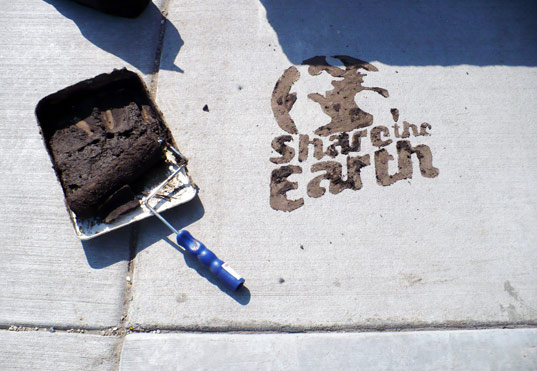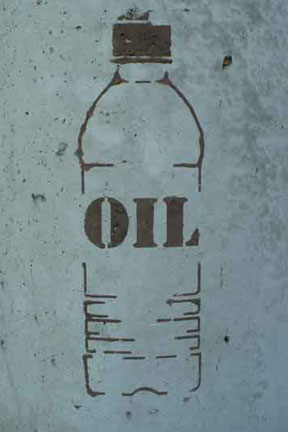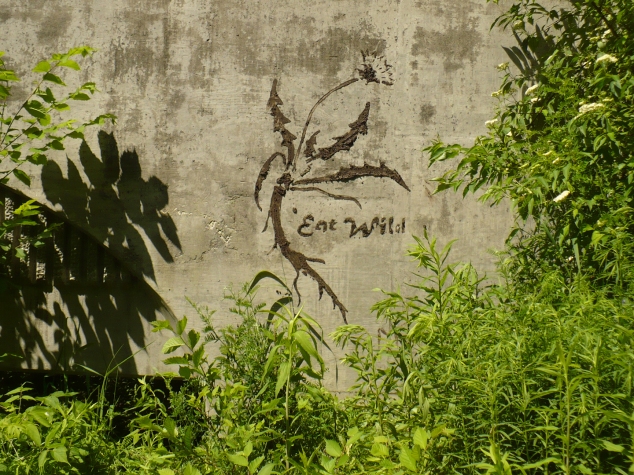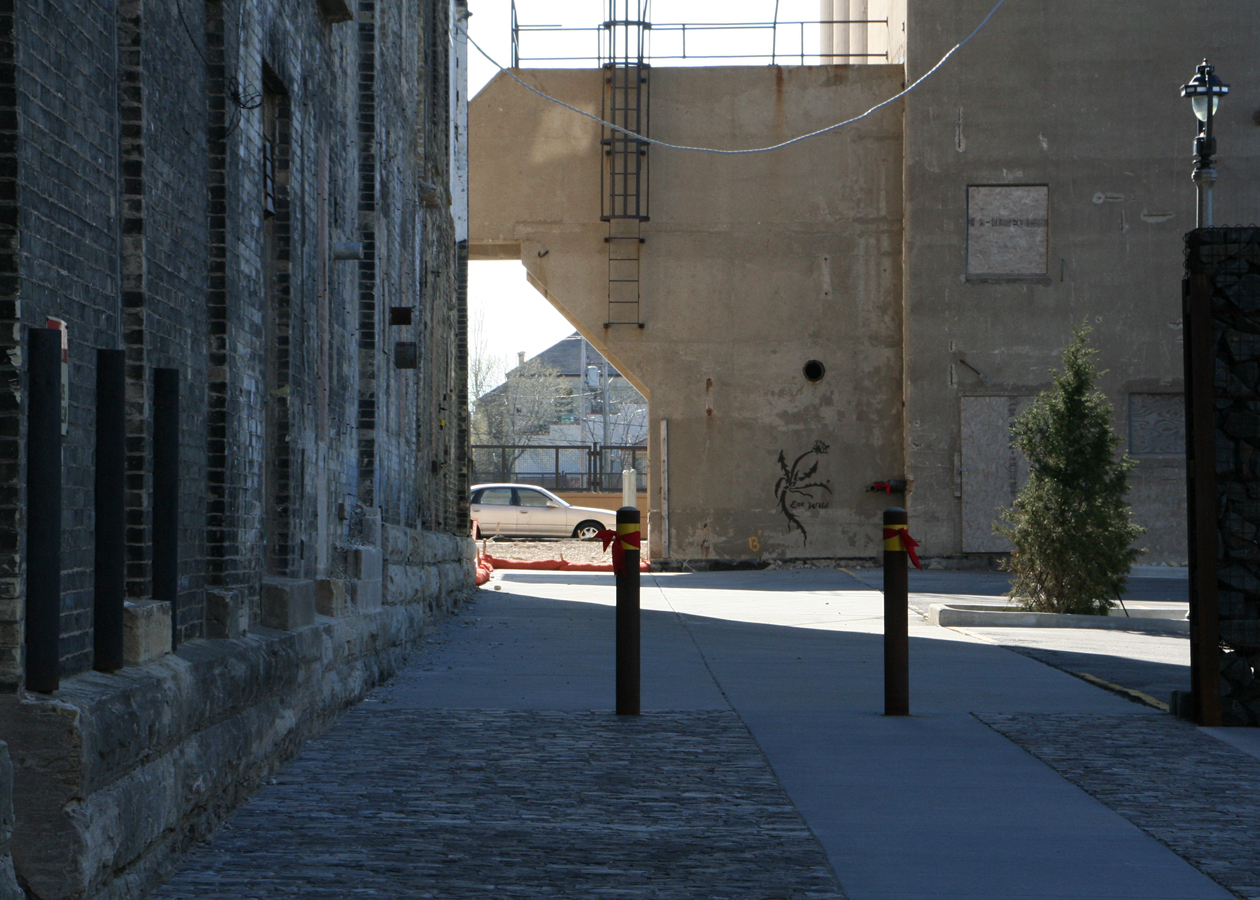The Environment
Over the past few decades, visual art has become an increasingly important medium in the promotion of environmental concerns, be they pollution, sustainability, over-consumption or extinction. The topics of environmental consciousness and sustainability are very important to me, so I chose to exhibit works that express these environmental concerns, particularly those that do so in unique and eye-opening ways.
.
.

Mud-Graffiti by Jessi Graves
Jessi Graves is a Wisconsin-based artist who has devoted himself to spreading environmental awareness and messages of social justice through his art. The work he is most recognized for is his mud-graffiti; using only mud (a biodegradable medium) this artist spreads a message of environmental consciousness in urban areas for all to see. His temporary, biodegradable and highly visible form of street art has spread like wildfire beyond his home state, and environmentally-inspired messages in mud can be spotted in hundreds of cities across the country. On his website, he even provides instructions on how to do it yourself.
.
.

Jessi Graves “Oil” Graffiti; Date Unknown

Jessi Graves “Oil” Graffiti; Date Unknown
These two mud stencils depict a water bottle emblazoned with the word “Oil.” This graffiti immediately and bluntly reminds the viewer that water isn’t the only aspect of bottled water; petroleum is used to create the plastic for the bottles and is used to transport them. Even recycling them requires fossil fuels.
.
.

Jessi Graves “Eat Wild” Graffiti; Date Unknown

Jessi Graves “Eat Wild” Graffiti; Date Unknown
These mud stencils exhibit the artist’s belief in wild, organically grown foods. In particular, the dandelion, which is edible. In his statement concerning this stencil, Jessi Graves proclaims that wild food is nutritious and provides a connection with nature, and that wild food can be found anywhere, even in the urban areas where his mud art is located.
I really like all of Jessi Graves’ environmentally-friendly mud art and the ideas behind them. And the concept of exhibiting them in urban, public areas for all to see is especially brilliant. The art’s message reaches a much broader audience than it would than if it were in an art gallery.
.
.

Chris Jordan; Cell Phones #2; Atlanta, 2005
Featured in: “Intolerable Beauty: Portraits of American Mass Consumption” (2003-2005)
Chris Jordan is one of the most prolific and visible artists of the “green movement.” Like Jessi Graves, social justice and environmental concerns are his main artistic topic. He is most well known for his photographs and format works depicting the massive scale of global consumerism and waste. The above photograph depicts a massive sea of old cell phones, a sobering look at the scale of American consumerism. But only a tiny fraction of the amount of phones retired annually are depicted here; Jordan’s Cell Phones image below provides a much more accurate look at the scale of waste that exists in the US alone.
.
.
Chris Jordan; Cell Phones; 2007
Featured in: “Running the Numbers: An American Self-Portrait” (2006 – Current)
Unfortunately, the image of Cell Phones is simply too huge to be exhibited here; to get a real feel for it, you have to go to the artists web site and zoom in on the image.
This image (I’m almost certain its not a “real” photograph) depicts the number of cell phones (426,000) “retired” every single day in the United States alone. It’s an unfathomable amount of waste, but Jordan’s image manages to give you some kind of grasp on just what 426,000 cell phones might look like. It’s almost frightening to consider that this is the amount of waste produced every single day. It’s guaranteed that anyone who looks at this image is bound to think twice before tossing their old cell phone.
.
.
Chris Jordan; Plastic Bottles; 2007
Featured in: “Running the Numbers: An American Self-Portrait” (2006 – Current)
Like the previous image, Chris Jordan’s Plastic Bottles is too huge to exhibit here, so click on the link and zoom in on the image on his site.
This image is even more shocking than Cell Phones. Plastic Bottles depicts the amount of plastic bottles (2 million) used in the US not every day, but every five minutes. It’s almost too shocking to believe that the sea of bottles depicted in the image could possibly be an accurate depiction of how much we consume in a mere five minutes, but it is.
It’s terrifying to consider the environmental damage the kind of waste depicted in these two images is doing to the Earth. Chris Jordan’s work makes these unfathomable numbers fathomable, and in doing so, lets us know just how much we as a nation consume and throw away.